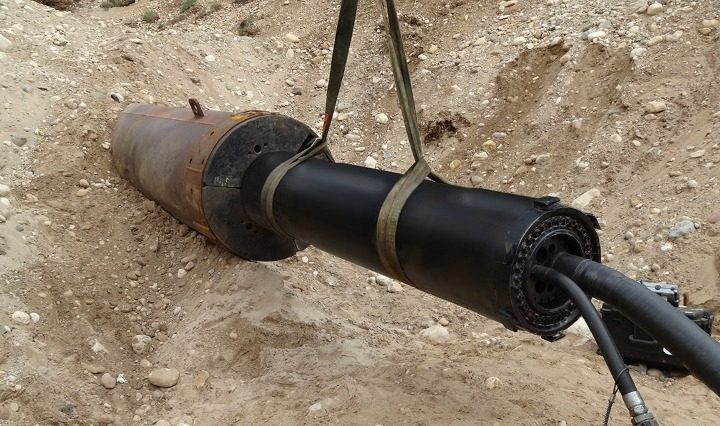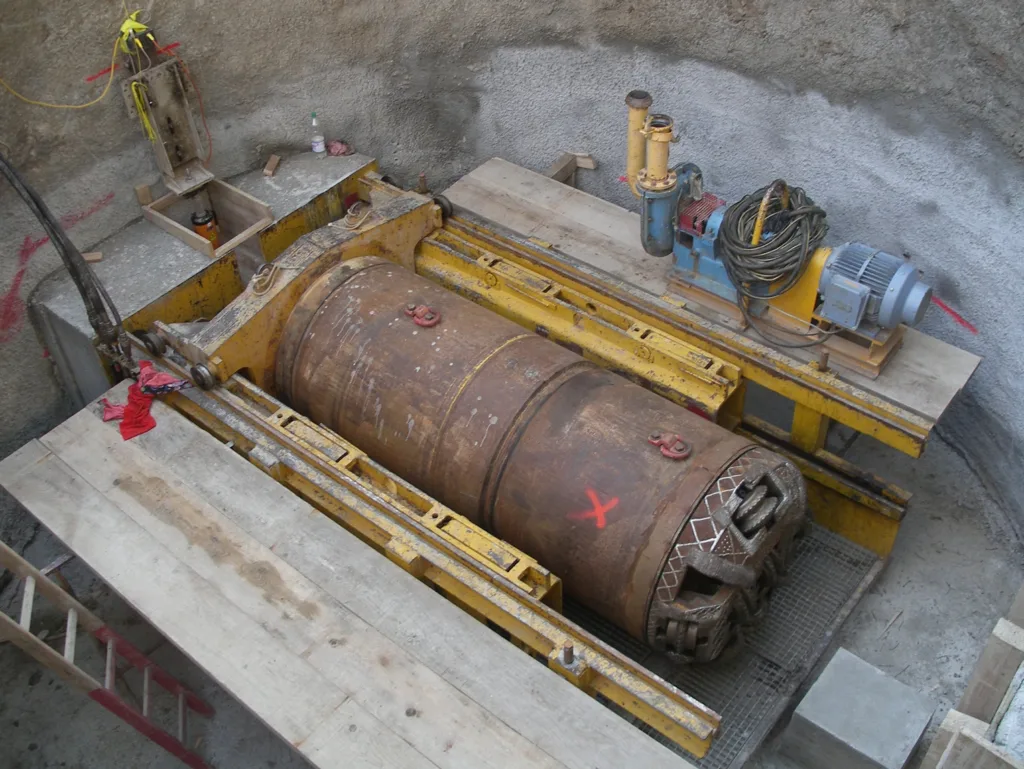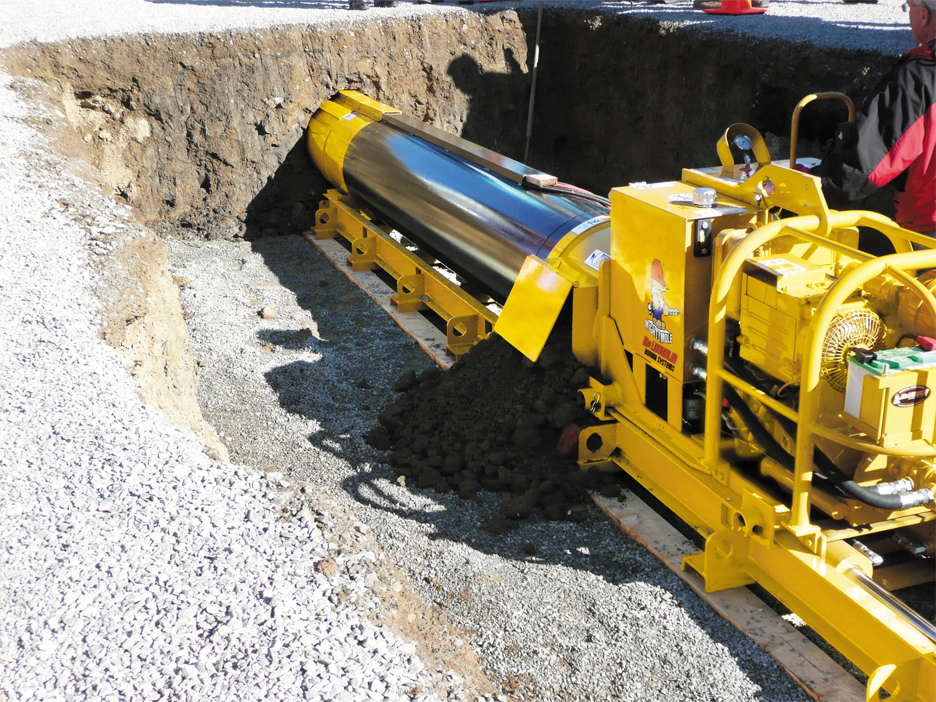Pipe ramming is a trenchless construction method used for installing pipelines and castings beneath existing infrastructure, such as roads, railways, or rivers, without the need for open trenching. This method involves driving a steel casing pipe into the ground using a pneumatic hammer, which allows for the precise placement of pipelines with minimal surface disruption. Pipe ramming is particularly important in urban areas or environmentally sensitive locations, where traditional excavation would be impractical or too disruptive.
Where is pipe ramming used?
- Urban Infrastructure
- Transportation Crossings
- Environmental and Ecological Sites
- Industrial Facilities
- Commercial Developments
- Redevelopment Projects
Advantages of pipe ramming
- Reduces the need for extensive excavation, minimising disturbance.
- Allows for faster pipeline installation, reducing project timelines.
- More economical due to lower surface restoration and traffic management costs.
- Minimizes impact on natural landscapes and ecosystems.
- Enables pipeline installation under roads and railways without disrupting traffic flow.
- Avoids damage to existing utilities, roads, and other infrastructure.
- Lowers danger associated with open excavation and surface excavation work.
- Provides precise alignment and depth control during installation.
- Can be used in a variety of ground conditions, including rocky or sandy soils.
- Requires less space for working compared to open-cut methods.
- Produces less noise and vibration than traditional excavation methods
Different types of pipe ramming method
Standard Pipe Ramming: Standard pipe ramming method is used to drive a steel casing pipe into the ground. The hammer delivers high-impact blows, advancing the pipe through various soil types. This method is effective for minimising surface disruption and is suitable for different soil conditions.
Microtunneling (Microtunnel Boring): Microtunneling involves a small, remotely operated tunnel boring machine (TBM) to excavate and install a pipe. It’s ideal for urban areas with limited space and sensitive environments, offering precise control over alignment and minimising surface disturbance.
Auger Boring: Auger boring combines a rotating auger with pipe ramming to remove soil as the pipe is installed. This method is effective for larger diameter pipes and handles various soil types by excavating and advancing the pipe simultaneously.
Impact Ramming: Impact ramming uses a hydraulic hammer to drive the pipe into the ground with repeated high-energy blows. It’s suited for dense or rocky soils, effectively penetrating tough ground conditions with minimal surface disruption.
Pilot Tube Ramming: Pilot tube ramming begins with a small pilot tube being driven into the ground. Once in place, the bore is enlarged to the desired diameter using a reaming tool, and the final pope is installed. This method provides precise alignment and is ideal for urban settings or areas with existing utilities.
Different equipments used used for pipe ramming:
Pneumatic Hammer:
Pneumatic hammers utilise compressed air to deliver high-impact blows, effectively driving steel casing pipes into the ground. Mounted on a rig, these hammers provide consistent, high-energy impacts and can handle a variety of soil conditions, from soft clays to dense sands. Their ability to minimise surface disruption makes them particularly well-suited for urban and sensitive environments, where maintaining surface integrity is crucial.

Hydraulic Impact Hammer:
Hydraulic impact hammers use hydraulic pressure to create strong, controlled impacts that drive pipes into challenging soil conditions, such as dense soils or rocky terrains. These hammers feature adjustable impact energy and frequency, allowing for precise control over the driving process. Their efficiency in penetrating tough ground makes them ideal for impact ramming methods, especially in environments requiring significant force to overcome soil resistance.

Microtunneling Machine (TBM):
Microtunneling machines, or tunnel boring machines (TBMs), are sophisticated tools designed for precise pipe installation. Equipped with a rotating cutting head, they excavate soil and rock while a conveyor system removes the excavated material. TBMs also include a pipe jacking system that instals the casing pipe behind the cutting head. They are particularly useful in urban areas with limited surface space and where high accuracy in alignment and depth is essential. Their design allows for minimal surface disruption while handling various soil types effectively.

Auger Boring Machine:
Auger boring machines are fitted with a rotating auger that removes soil from the borehole as the pipe is advanced. Ideal for installing larger diameter pipes, these machines handle a range of soil conditions, including cohesive clays and granular sands. The auger’s ability to efficiently cut and lift soil, combined with the equipment’s control over bore alignment and depth, makes it effective for projects requiring simultaneous excavation and pipe installation, balancing excavation efficiency with construction needs.

Rotary Drilling Rigs:
Rotary drilling rigs are versatile machines designed to bore holes using a rotating drill bit. Equipped with various drilling tools, these rigs can be adapted for pipe ramming by creating the bore necessary for installing large diameter pipes. They excel in handling both soft and hard soil conditions and can be adjusted for different drilling depths. Rotary drilling rigs are commonly used in projects that require deep boreholes and precise pipe placement, offering flexibility and accuracy in diverse ground conditions.

Installation method of pipe ramming
- Site Assessment: Survey and plan for ground conditions and utility locations.
- Preparation: Set up equipment as per project requirement and mark entry and exit points.
- Casing Installation: Place and ram the casing pipe into the ground.
- Pipe Ramming: Drive the casing pipe to the desired depth and alignment.
- Pipeline Insertion: Insert the pipeline through the casing once ramming is complete.
- Backfill and Restoration: Fill the launch pit and restore the surface.
Conclusion
Pipe ramming is an efficient trenchless method that offers significant advantages for underground pipe installation, particularly in challenging environments. As advancements in technology continue, pipe ramming is poised to play an increasingly important role in sustainable and efficient utility infrastructure projects.


